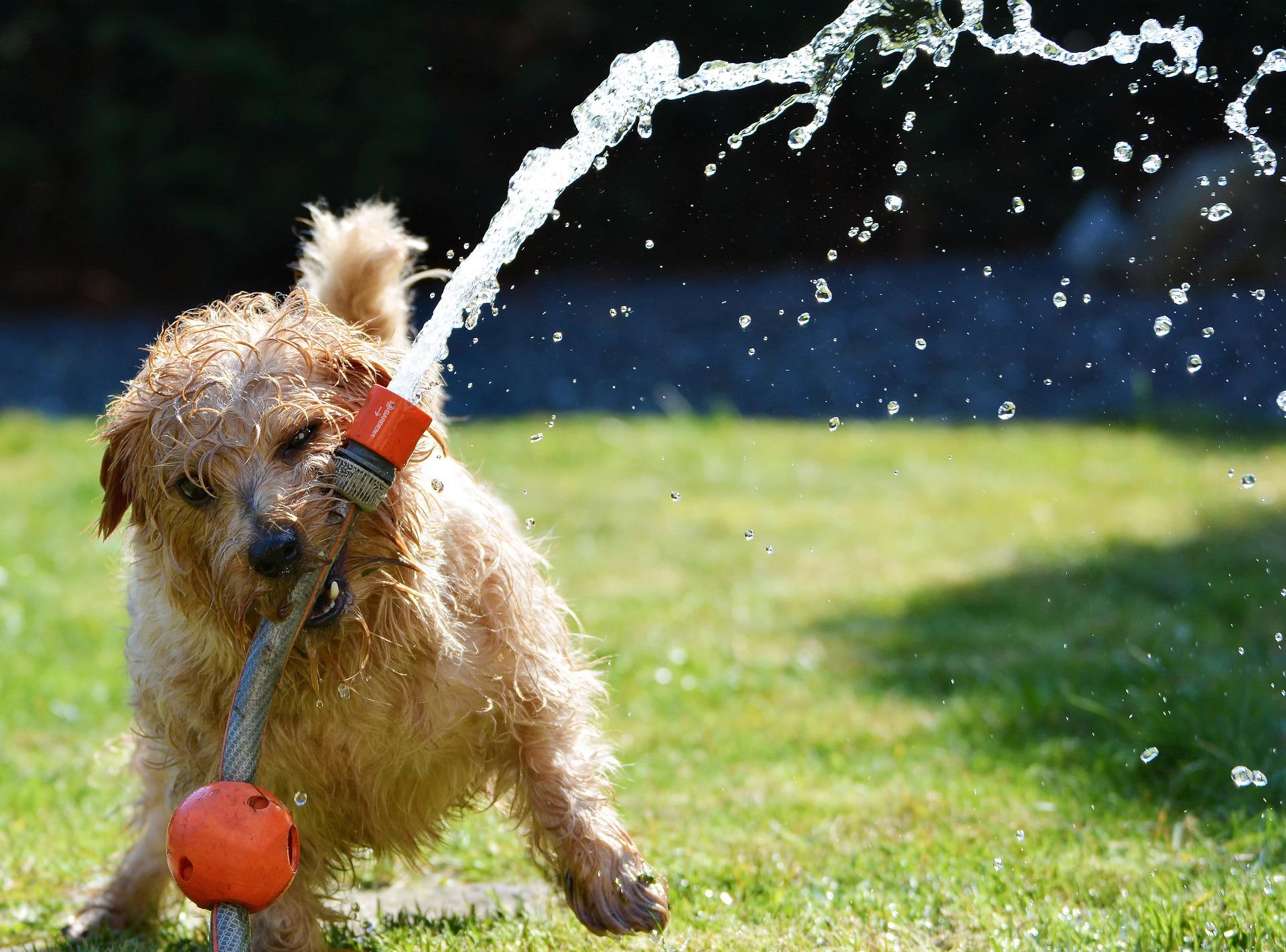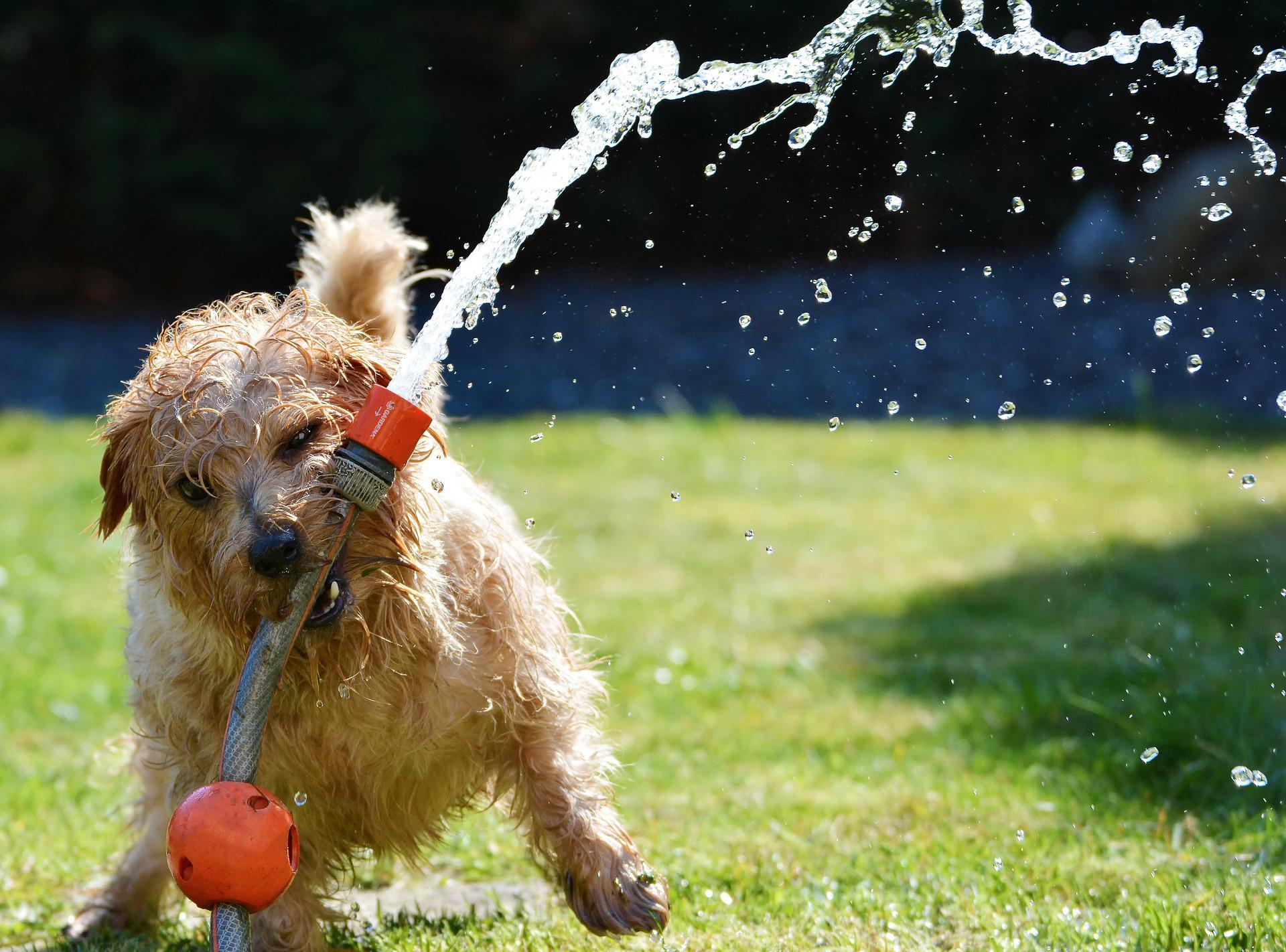Summer's almost done, but warm weather isn't -- watch for heat stroke in pets!

Every summer, vet clinics across the country see cases of heat stroke - a serious and often deadly condition with pets getting overheated. As the heat and humidity of summer continues, it is important to be aware of the serious risk it can pose to pets and to take measures to keep them cool and safe.
What is heat stroke?
If an animal’s temperature gets too high ( > 105.8 degrees F), important proteins in the body start to melt, which can cause serious organ damage, organ failure and often death. How high and how long the body temperature is elevated impacts the severity of the problem.
Unlike people who sweat to keep cool, dogs and cats have very few sweat glands. They rely instead on panting to get rid of excessive heat. Unfortunately, panting is much less efficient than sweating. So keep in mind that dogs and cats cannot stay as cool as their owners when doing similar activities.
What are risk factors for heat stroke?
There are many factors that can increase the risk of heat stroke. These include:
- High heat and humidity
- Too much exercise, especially on hot days
- Poor ventilation
- Lack of shade
- Not enough or no water
- Pets left in cars or closed homes/garages without A/C
There are also breed-related or health issues that can increase the risk of heat stroke, including:
- Very young or very old animals
- Heart disease
- Short-nosed, flat-faced pets, such as bulldogs, pugs, etc.
- Prior medical issues (such as collapsing trachea or laryngeal paralysis)
- Thick or long coats
- Extremely active, working or hunting dogs, that will themselves to keep going in spite of the heat
What are signs of heat stroke?
Early signs of heat stroke include:
- Heavy panting or problems breathing
- Restlessness or agitation
- Drooling more than usual
- Dark red gums
As things worsen, symptoms include:
- Racing heartbeat
- Weakness or collapse
- Dizziness/having trouble walking
- Very pale or blue colored gums
- Disorientation/confusion
- Vomiting/diarrhea (often with blood)
- Muscle tremors
- Seizures
- Dilated pupils
What to do if heat stroke is suspected
Heat stroke is a serious and life-threatening condition. If you suspect heat stroke in your pet, follow the steps below and see your vet right away. Even with treatment, many dogs do not make it.
- Take your pet to a cool, well-ventilated area.
- Hose or sponge your pet with cool water, avoiding the face.
- Make sure to get the underside as well
- Do not use ice baths since cooling them down too fast can cause the blood vessels to constrict and lowers their ability to cool
- Fans, if available, can help speed up the cooling
- Offer water
- Take to the vet immediately (in an air conditioned car), even if they look better
Exercise tips during the summer months
Exercise is still vital for your pet, even when it’s hot outside. It helps to keep your pet’s heart healthy! We’ve listed some tips below to get that cardio in without overheating your pet.
- Exercise during the coolest part of the day (morning and evenings)
- Decrease the intensity of exercise and/or distance of walks and take plenty of breaks
- Choose a shady, grassy area for play
- Have plenty of water at all times and encourage drinking. Ice cubes in the water can help keep it cool.
- Consider filling a kiddie pool with water or playing fetch through a sprinkler
- Take your dog to the water if they like to swim
- Indoor games, such as fetch in the air-conditioning is a great option when it is hot outside
- Offer frozen treats/pupsicles
Keep your pet safe for the rest of the summer!

